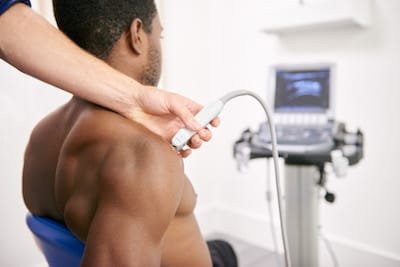“Are you waiting for a joint replacement and experiencing pain?
Are you considering a steroid injection to alleviate the pain?
If so, this blog will reveal everything you need to know.”
Can I have a corticosteroid injection before surgery?
The answer to this question is dependent on the time between an injection and surgery. Corticosteroids have been shown to increase the risk of developing a joint infection after surgery and should be used with caution. It is vitally important to leave enough time for any corticosteroid medication to leave your body before having surgery.
What is a corticosteroid injection and what are they used for?
Corticosteroid injection (also known as cortisone or steroid injections) is a potent anti-inflammatory medication that has been successfully used for decades to reduce pain and swelling in joints. Corticosteroid injections are used predominantly to treat joint osteoarthritis, rheumatoid arthritis, frozen shoulder, and bursitis.
Corticosteroid is a drug that mimics the naturally occurring hormone, cortisol which is produced in the adrenal glands, situated above the kidneys. Corticosteroids work by entering cells and modifying their internal structure. Corticosteroids switch off pain and inflammation at the source. Furthermore, it suppresses the immune system, making it highly effective at treating auto-immune conditions like rheumatoid arthritis.
Unfortunately, corticosteroids can reduce the activity in the immune system, making users more vulnerable to illnesses and infections in the short term after an injection. This is particularly relevant if you have a pre-existing underlying medical condition such as cancer.
Why do corticosteroids increase the risk of infection after surgery?
It’s still unclear why there is an increased risk of joint infection following corticosteroid injection, but there are two main theories that attempt to explain this phenomenon.
The first theory is the impaired wound healing theory. This theory suggests that corticosteroid medication suppresses the immune system. It has been suggested that some of the injected corticosteroid medication may not have the time to fully dissolve before surgery. The remaining corticosteroid particles continue to impair the healing process after the surgery, leading to an increased risk of joint infection (Horne et al., 2008; Matzon et al., 2020; Nie and Li, 2021).
The second theory is the skin organism theory. This theory suggests that even with meticulous skin cleaning and the use of a sterile injection technique, 14-28% of needle tips continue to show evidence of bacteria. If bacteria is accidentally introduced into the body, during a corticosteroid injection, then an infection may develop (Horne et al., 2008). This is of particular concern due to the immunosuppressive effects of corticosteroid mentioned earlier.
What does the research say about corticosteroid injections before surgery?
https://www.shutterstock.com/image-photo/knee-pain-disease-concept-hands-on-1038024379
Can I have a corticosteroid before a hip or knee replacement?
The link between corticosteroid injections and post surgical infection is well-documented. Studies have shown that the time between an injection and surgery cruical. The gap between corticosteroid injection and surgery remains unclear, ranging between 3 and 10 months (Berkani et al., 2022. Horne et al., 2008; Richardson et al., 2019). Many surgeons recommend a gap of between 3 and 6 months after a corticosteroid injection and surgery.
Furthermore, both Berkani et al. (2022) and Richardson et al. (2019) also recommend the same rest period between hyaluronic acid injections and surgery.
Currently, there is no research on post surgical infection rates following PRP injections. Until there are clear guidelines surrounding PRP injections and post surgical infection rates, PRP injections should be treated the same as corticosteroid and hyaluronic acid injections.
Corticosteroid and shoulder surgery
Rotator cuff tears are a frequent cause of shoulder pain, and surgical repair is often recommended to patients. According to research by Compagnoni and Randelli et al. (2020) , a minimum of one month gap between a corticosteroid injection and surgery is needed to prevent post-surgical infection.
Corticosteroid and hand surgery
It’s not just the larger joints that are vulnerable to corticosteroid-induced post-surgical infections. Injections around tendons can also be at risk of infection after surgery. According to research, the use of corticosteroid injections prior to trigger finger release surgery is associated with a significant increase in the development of an infection (Matzon et al., 2020).
What should I do if I think I have developed an infection?
Post-surgical infections are a serious condition that can have significant consequences. An infected joint is a medical emergency, and if suspected, the patient should go to their local A&E department immediately. Potential infections are assessed using plain X-rays, joint fluid aspiration, and blood tests. If an infection is found, treatment is started right away. Treatment for joint infections typically involves antibiotics (oral and/or intravenous) and, in some cases, additional surgery.
What are the signs and symptoms of an infection?
It typically takes 5 to 7 days for an infection to become active. Patients who have developed an infection typically feel well immediately after surgery or an injection. However, as bacterial cultures develop within the joint, signs of an infection become apparent. The signs and symptoms of an infection include:
- A red, hot joint
- A swollen joint
- A significant increase in pain or symptoms
- An accompanying fever or high temperature
So if I can’t have a corticosteroid injection prior to surgery what pain control options do I have left?
Due to the high risk of developing joint infection associated with corticosteroid injections before surgery, considering alternative pain control techniques is crucial. Some of the conservative pain management methods to consider include modifying daily activities, taking regular breaks, and using heat or ice.
It’s also important to consult a GP or prescribing healthcare professional before using over-the-counter painkillers or consider prescription medication if needed.
Seeking help from a physiotherapist can also provide relief through rehabilitation exercises, manual techniques, stretching, and acupuncture. Strengthening the surrounding muscles and keeping flexible through regular stretching can also help control pain and hasten recovery after surgery.
According to orthopaedic consultants, it is recommended to wait for 3 to 6 months between a corticosteroid injection and surgery to avoid the risk of infection. However, time frames may vary depending on the surgeon. Hence, it is essential to discuss any pre-surgical injection with your orthopaedic consultant beforehand.
If you have any questions or need some advice please call Complete on 020 7482 3875 or email injections@complete-physio.co.uk.
References:


